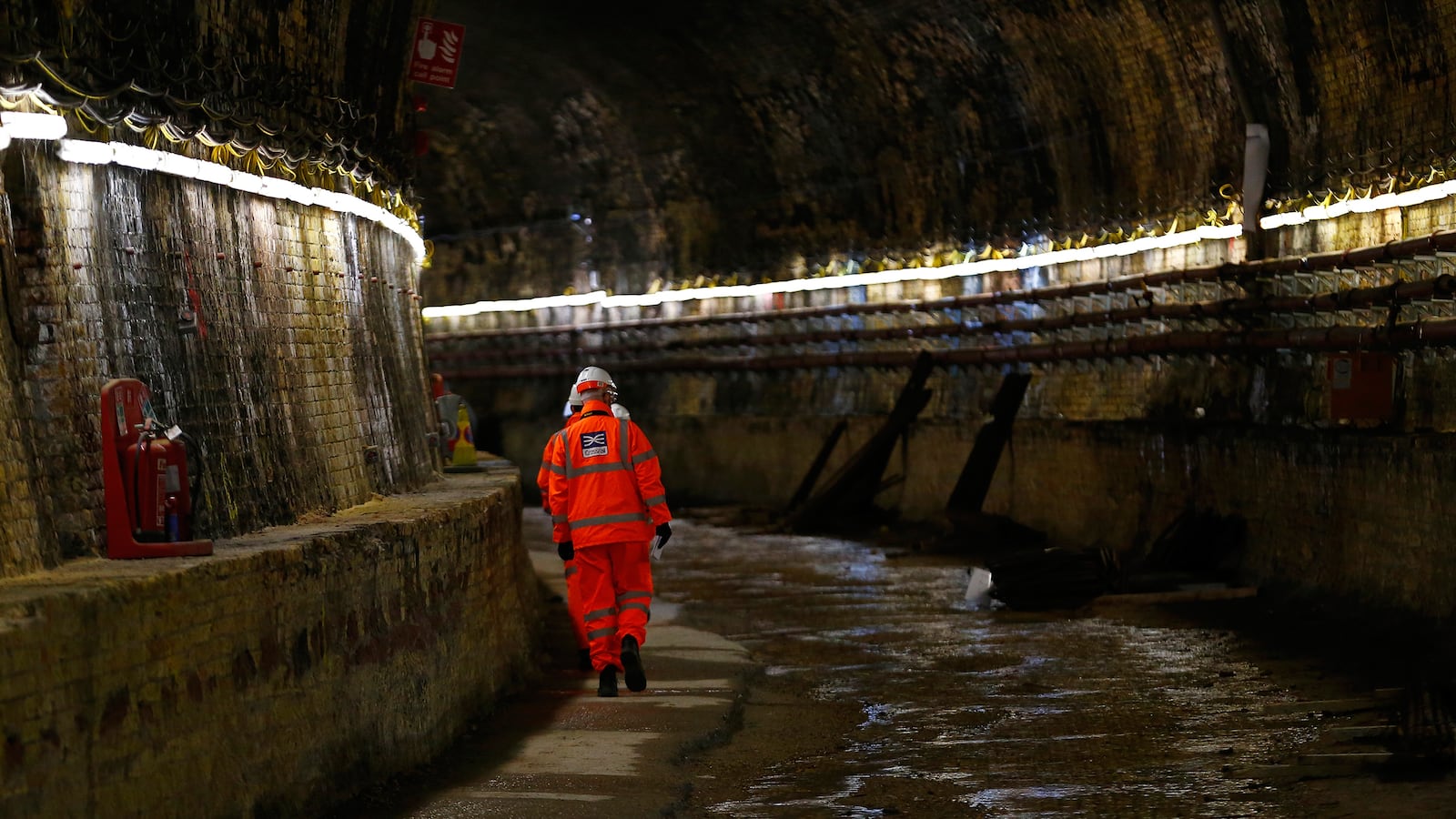LONDON — It’s what one might call a discovery.
Edward Bodenham, the ninth-generation scion of Floris, Britain’s oldest perfume-maker which sits in the heart of Mayfair, usually spends his days introducing clients to famous scents, including one custom-made for Winston Churchill, and another for Marilyn Monroe.
But following a recent inspection by this reporter of some of the secret archives in a back room—think ledger books with orders and re-orders from various Royals, going back to when the family-run business opened here in 1730—he had something more to show.
Bodenham descended the stairs, leading into a cold basement, a cavernous area that served as his grandfather’s former workshop, from which fragrances once wafted up to the street.
He then hesitated and turned the corner into an alcove hidden from sight, and pointed at a boarded-up archway descending into a tunnel of darkness in the corner.
It is one of several secret tunnels that the family rediscovered here when they renovated this part of the building not too long ago.
His theory, based on family folklore and other research, is that the gentlemen of London used these tunnels to stay out of sight and get into mischief.
Bodenham believes that the tunnels went under Mayfair to some of London’s secret corridors of power, or the so-called gentlemen’s clubs where women are still mostly banned today, with rare exceptions like the Queen, who is allowed into White’s, the poshest of them all.
“It is rumored that there were many tunnels running underneath St. James’s connecting to the gentlemen’s clubs, Berry Bros. & Rudd the winemakers, and apparently to the Royal Palaces in the earliest days,” Bodenham told The Daily Beast, mentioning one of the other neighbors on the street here in St. James.
In fact, as legend has it, Charles II, the so-called ‘Merry Monarch,’ asked for this upscale retail area to be built close to St. James Palace, where he lived. He is supposed to have had one of these tunnels built from his palace to Berry Bros, his favorite liqueur store, and would apparently then pop across to the local brothel from there.
Other tales of what happened inside these secretive dungeons seem to have been buried for now in the rubble that fills most of these passageways.
But Bodenham is hoping to find out more.
“I’m really just going by family folklore that has been passed down over the years and also what I’ve heard from some of our local neighbors and people that have been in touch to research more about the St James’s area,” he says.
Back in the day, his grandfather used to refer to this area down here as the mine.
“Apparently the tunnels were used so that gentlemen of the time could discreetly visit the clubs in the area and meet up to discuss business, topics of the day and to have a few drinks and play cards,” Bodenham says.
“I cannot be certain, but I presume that at one time some of the family members would have done the same. Joseph Floris was apparently a keen high roller and would often play cards and discuss local current affairs with the local icon and arbiter of men’s fashion, Beau Brummell, in our showroom through the back of the Floris Shop here in Jermyn Street.”
Lots has been written on the web about London’s underground rivers, government tunnels and Tube network, but tunnels used by monarchs and the elite to go out on the town are less well-known about.
One man to have sunk into more than most of London’s subterranean world of tunnels, metro stations, bunkers and even rivers, is Dr. Bradley L. Garrett, a Cultural Geographer at the University of Southampton and Visiting Research Associate at the University of Oxford.
His books (Subterranean London: Cracking the Capital, Explore Everything: Place-Hacking the City) include stories of dodging guards and red lights to see first-hand underground oddities like an intact office designed for Churchill and secret train stations. Garrett likes slipping into manholes unseen.
One of his discoveries was a disused underground Mail train line.
“The Mail Rail we rediscovered under London in 2011 is a 6.5-mile system of subterranean railway built in 1926 to move post from across the city,” Garrett wrote in an email to The Daily Beast. “Inside, there were tiny trains called ‘mini yorks,’ now all of course immobile.
The tunnels of the Mail Rail were already calcifying, said Garrett, “filling with stalactites and stalagmites. You could easily imagine it in another 100 years beginning to look like a natural cave, with old postal bags and trains being sucked into the tunnel walls.”
The London Underground also has lots of secret underground tunnels and disused underground stations which he has used for research.
“That network is so immense and there are so many in-between spots you can slip into,” Garrett says. “Hiding in tunnels watching the trains fly by, full of commuters that don’t know you’re in there, is an awesome feeling.”
These tunnels are part of a whole subterranean universe found underground, he said.
“The train tunnels are threaded through and around bunkers, sewers and drains, the Mail Rail, cable runs and secret government tunnels,” Garrett says. “The government wouldn’t tell engineers where the ‘secret’ tunnels were underground. Most of the tourists walking at street level, photographing Parliament, haven’t got a clue [about] all that is tangled up under their feet.”
Used for somewhat other purposes, another of these alleged tunnels apparently went from the criminal court The Old Bailey to the nearby church, St Sepulchre so that priests could reach those condemned for an execution.
It has also been posited that there are secret tunnels leading from Buckingham Palace to the Tube and Whitehall.
As for what these gentlemen did underground, or even what they do today within the walls of their clubs, remains something of a mystery.
Graham Snell, the club secretary at Brook’s on St. James Street, wasn’t giving anything away, and says that he has seen no evidence of these tunnels at his club that dates back to 1762.
He did, however, share stories on other tunnels running underneath the City, used for safer transportation of money, including one that, he says, his father saw running through someone’s living room.
Bodenham believes that unfortunately many of the tunnels have been filled in with rubble over the years, as it was an easy way of avoiding having to remove rubble when carrying out building work. So, London’s tunnels aren’t about to give up their many and varied secrets anytime soon.






